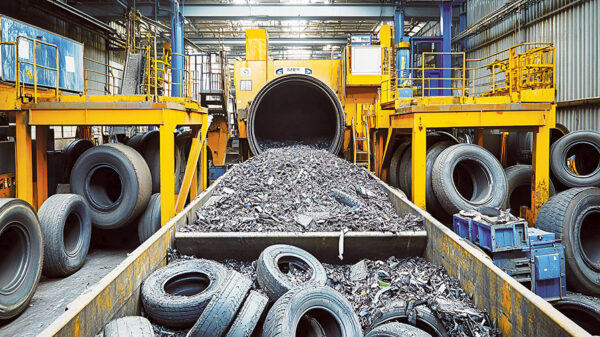Eastman announced it has secured a significant amount of feedstock needed for its planned molecular recycling facility in Port Jerome sur Seine, Normandy, France. With an investment of $1 billion, the planned facility will become the world’s largest material-to-material molecular recycling plant.
“We began the year with roughly half of our feedstock needs secured for phase 1 of the project, and with these important additional agreements in place we are moving closer to the more than 80 percent we expect to secure by year-end,” said Brad Lich, executive vice president and chief commercial officer. “This strong progress is a testament to the complementary nature of Eastman’s innovative molecular recycling technology to the current mechanical technologies in the market and to the growing need to enable circularity for more waste streams going back to high-quality contact-sensitive output.”
Citeo, the leading Producer Responsible Organization (PRO) in France, recently announced that Eastman, in a commercial partnership with Paprec, France’s leading integrated waste management company, has been selected to receive a significant amount of feedstock for the methanolysis facility in Normandy. The Citeo agreement to secure French household waste has provided Eastman with a strong foundation for securing French-sourced waste for its project in France.
Eastman also shared it has reached an additional agreement with Interzero, an innovation leader in plastics recycling with the largest sorting capacity in Europe, for an additional 25,000 metric tonnes of waste in addition to the 20,000 metric tonnes from a previous agreement announced last year.
“We’re pleased to grow our initial agreement with Eastman and do even more to solve the waste crisis we’re facing,” said Jacco de Haas, chief commercial officer of Interzero Plastics Recycling. “Chemical recycling is a necessary complement to mechanical recycling to keep more raw materials in the loop. Interzero and Eastman are committed to creating material circularity and Eastman’s facility in France will process colored and opaque PET waste that cannot be recycled mechanically.”
Another agreement with a leading company in the waste management and recycling eco-system was reached at the end of last year. This agreement, adding approximately 30,000 metric tonnes of waste, allows geographic coverage in strategic waste supplies.
Eastman recently shared the decision to build the facility in two phases which will allow the facility to recycle over 200,000 metric tonnes of hard-to-recycle polyester waste annually, most of which is currently landfilled or incinerated today. Due to the updated plans, the company now expects phase 1 of the project to be mechanically complete in 2026 and process 100,000 metric tonnes.
“Going with a phased approach for the project allows for design changes in the facility to recycle more plastic waste by moving from the initial estimates of approximately 160,000 metric tonnes to over 200,000 metric tonnes annually,” said JP Kuijpers, managing director of EMEA and director general of Eastman circular solutions in France.
Eastman will use its proven Polyester Renewal Technology (PRT) in France to recycle hard-to-recycle plastic waste that remains in a linear economy today. The company’s recycling technology allows this hard-to-recycle waste to be broken down into its molecular building blocks and then reassembled to become like new material without any compromise in quality and performance. Eastman’s PRT enables the potentially infinite value of materials by keeping them in production, lifecycle after lifecycle. With the technology’s highly efficient yield and the renewable energy sources available at the Normandy location, Eastman can transform waste plastic into like new food contact polyesters with lower greenhouse gas emissions than traditional methods.
In addition to this announced plant in France, Eastman is investing in two other molecular recycling plants in the U.S. – Kingsport, Tennessee, and another U.S site to be announced later this year with an expected combined global investment of approximately $2.25 billion for all three facilities.






